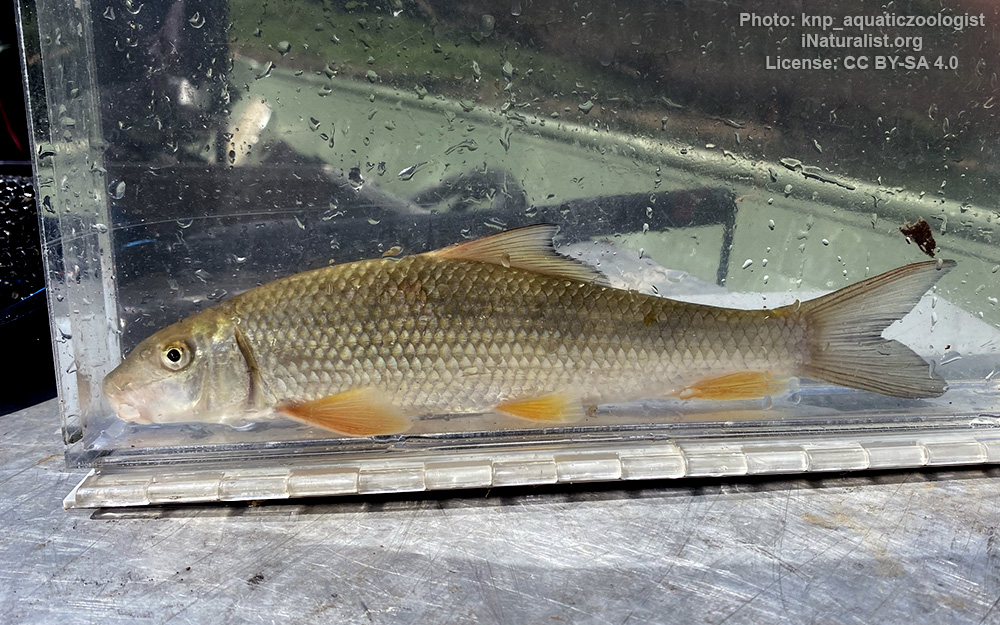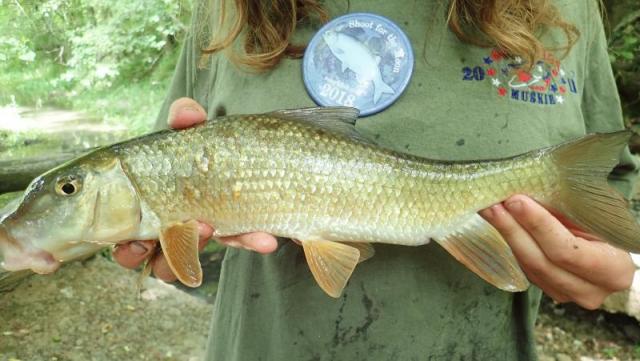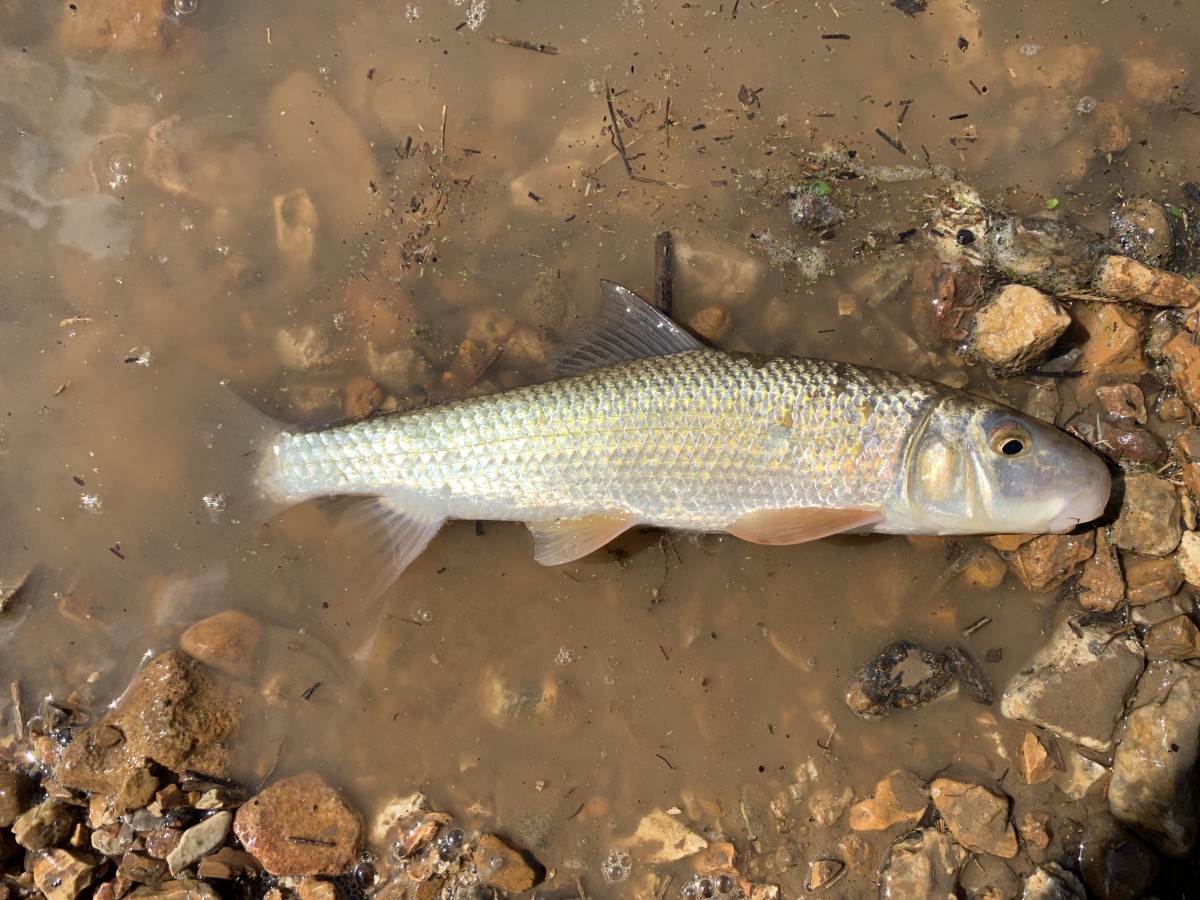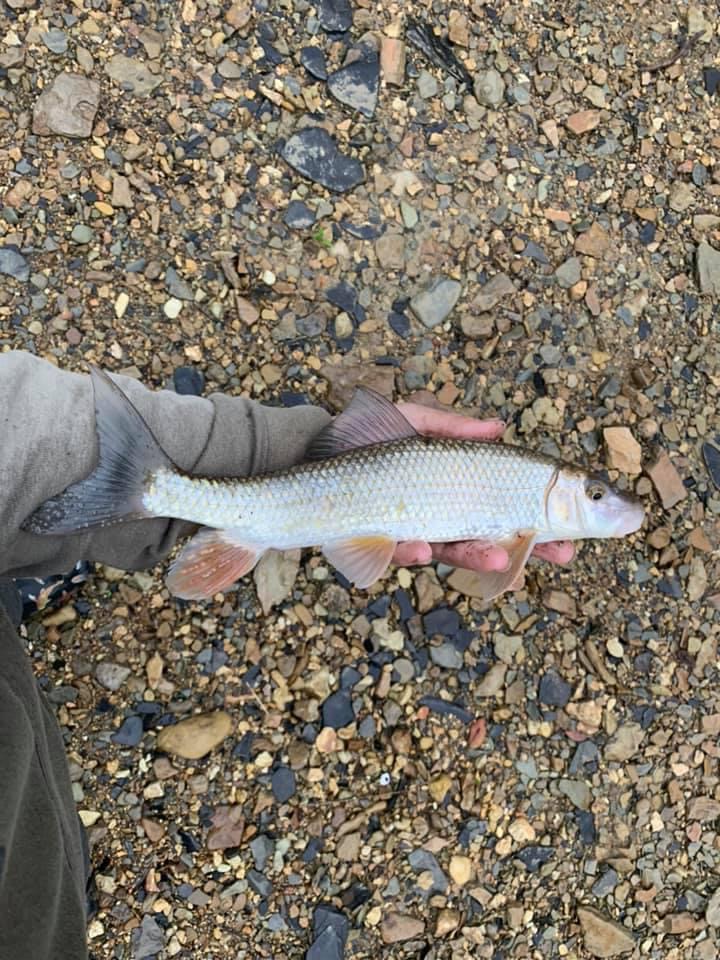Black redhorse
(Moxostoma duquesnei)

Classification
General data
The black redhorse is a species of freshwater fish endemic to Ontario and the eastern half of the United States, where it lives in streams and small to medium rivers.
A bottom-feeder, it feeds on microcrustaceans, aquatic insects, detritus, and algae. The black redhorse spawns in the spring.
This species has been identified as Threatened by the Committee on the Status of Endangered Wildlife in Canada (COSEWIC). It is currently being considered for listing under the federal Species at Risk Act (SARA).
The black redhorse is a species of the sucker family, Catostomidae. It is laterally compressed and has a shallow body shape with little arching to the back. Nearly half of the head is a long, rounded snout. The mouth is on the underside of the snout and has a thick lower lip. The body is silvery-blue with a gray or brownish dorsal surface and silver or white belly. Some of the scales have dark edges. During the breeding season males have dark stripes and orange or pink coloration along the flanks, and develop nuptial tubercles on the tail fins.
The black redhorse can be distinguished from similar species by the lack of red on the tail and the lack of grooving on the lips.
Distribution
The black redhorse has a wide, but disjunct, distribution in eastern North America. It is found from Alabama and Mississippi in the south to Ontario and Michigan in the north, and from New York in the east to Oklahoma and Minnesota in the west. In Canada, it is limited to southwestern Ontario where it occurs in only six watersheds. In the Lake Huron drainage, it is found in the Bayfield River, Maitland River and Ausable River watersheds. In the Lake Erie drainage, it is known from the Catfish Creek (extirpated) and Grand River watersheds. It is also present in the Thames River watershed in the Lake St. Clair drainage.














